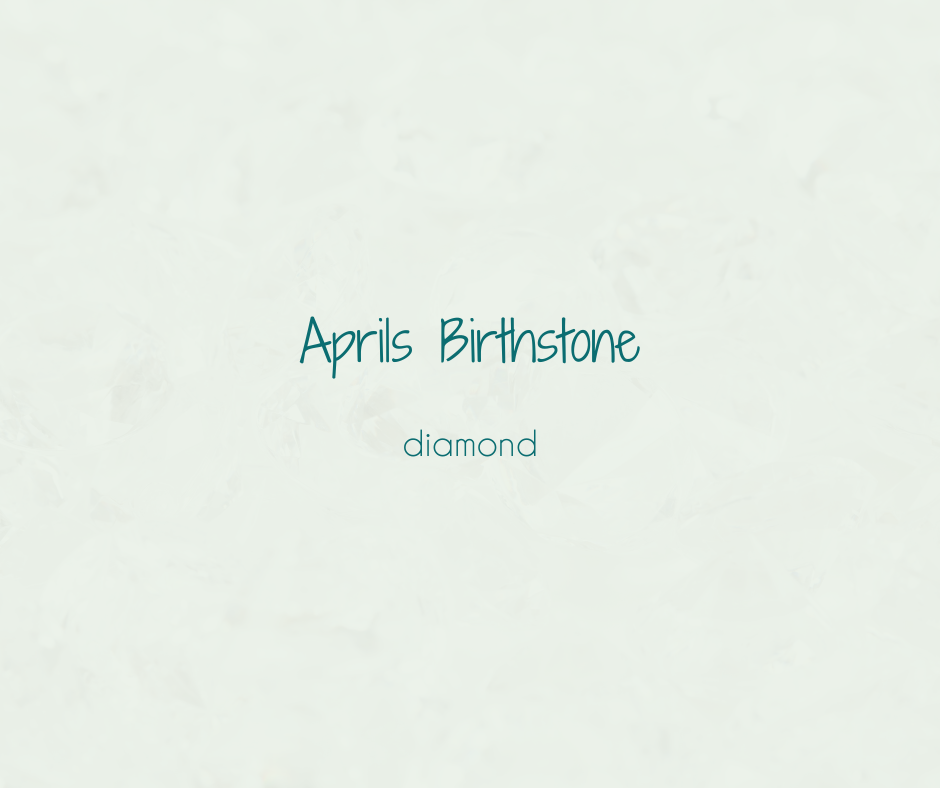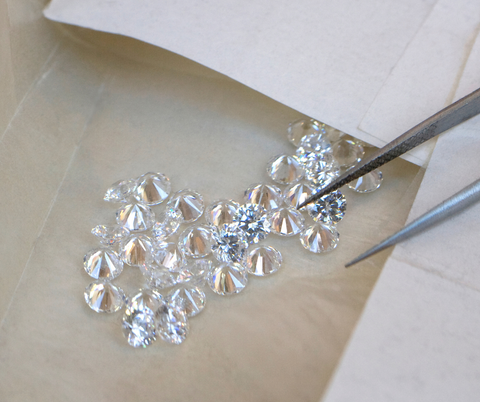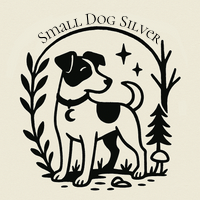
Aprils Birthstone - the Diamond!
As the old adage goes, "diamonds are a girl's best friend". And for those born in the month of April, this statement couldn't be more true. The diamond, a precious gemstone that has been prized for its beauty and rarity for centuries, is the official birthstone of April.

Diamonds are formed deep within the Earth's mantle, where intense heat and pressure cause carbon atoms to crystallize into the gemstones we know and love. These gems are then brought to the surface through volcanic eruptions, where they are mined and cut into a variety of shapes and sizes.
The beauty of diamonds lies not only in their natural sparkle and shine, but also in their versatility. Diamonds can be cut into a range of shapes, including the classic round brilliant, the romantic heart shape, and the modern princess cut. They can also be used in a variety of jewellery pieces, from engagement rings to earrings and necklaces.
You may have heard of the Four Cs - but what are they?
Cut - The cut of a diamond refers to its shape and how well it reflects light.
Clarity - The clarity of a diamond refers to the absence of internal or external blemishes.
Colour - Diamonds have a range of colours. From the bright white colourless to light yellow, brown, pink and blue. Also available are 'salt and pepper' diamonds with a range of inclusions - I love these!
Carat - Finally, the carat weight of a diamond refers to its size, with larger diamonds typically being more valuable.
The folklore of Diamond
Diamonds have been steeped in folklore and mythology for thousands of years. In ancient times, diamonds were believed to have mystical powers and were associated with the gods. The Greeks believed that diamonds were tears of the gods, while the Romans thought they were splinters of fallen stars.
In India, diamonds were believed to have healing powers and were used in Ayurvedic medicine to treat various ailments. They were also seen as a symbol of purity and enlightenment, and were used in religious rituals and ceremonies.
In medieval Europe, diamonds were associated with power and wealth, and were worn only by royalty and the nobility. They were believed to bring good fortune and protect against evil and danger.
During the Renaissance, diamonds became a symbol of love and devotion, and were often given as gifts between lovers. They were also used to adorn wedding rings and were believed to strengthen the bond between husband and wife.
Today, diamonds are still associated with love and commitment, and are a popular choice for engagement rings and wedding bands. They are also used in a variety of spiritual practices, and are believed to promote healing and balance.
While the mystical powers of diamonds may be the stuff of folklore and legend, there's no denying the enduring beauty and allure of this precious gemstone. Whether you're born in April or simply appreciate the timeless elegance of a diamond, there's no denying the power and mystique of this ancient and enduring gemstone.
I've heard of Lab Grown diamonds - what are they?
Lab-grown diamonds, as the name suggests, are created in a laboratory setting. They are grown using advanced technology that replicates the conditions under which natural diamonds are formed. Lab-grown diamonds have become increasingly popular in recent years as a more ethical and affordable alternative to mined diamonds.
What are the pros & cons of lab grown vs mined?
Lab-Grown Diamonds:
Pros:
- Lab-grown diamonds are more ethical and environmentally friendly than mined diamonds, as they do not require mining or cause habitat destruction.
- Lab-grown diamonds are often less expensive than mined diamonds of similar quality, making them more accessible to a wider range of people.
- Lab-grown diamonds can be produced in a range of colours and shapes, giving consumers more options to choose from.
Cons:
- For some people, the fact that lab-grown diamonds are man-made and do not have the same natural character as mined diamonds can detract from their value and appeal.
- The technology used to produce lab-grown diamonds is still relatively new, and some people may be hesitant to trust the quality and durability of these diamonds.
Mined Diamonds:
Pros:
- Mined diamonds have a long history of being associated with luxury and value, which can make them feel more special and meaningful.
- Mined diamonds are completely natural and have a unique character that cannot be replicated.
- For some people, the fact that mined diamonds are a finite resource and require extensive mining processes adds to their value and appeal.
Cons:
- The mining process for diamonds can have negative environmental and social impacts, including habitat destruction, water pollution, and human rights violations.
- Mined diamonds can be more expensive than lab-grown diamonds of similar quality, due to the high costs associated with mining and production.
In summary, the choice between mined and lab-grown diamonds ultimately comes down to personal preference and values. Mined diamonds have a long history of luxury and rarity, but come with environmental and social concerns. Lab-grown diamonds offer a more ethical* and affordable option, but may not have the same natural appeal for some people.
*While lab-grown diamonds are often marketed as a more ethical and environmentally-friendly alternative to mined diamonds, they do still have their own set of environmental and ethical considerations.
One issue is the amount of energy required to create lab-grown diamonds. The process of growing diamonds in a laboratory requires a significant amount of energy to power the machinery and create the necessary conditions. This energy often comes from non-renewable sources, which can contribute to greenhouse gas emissions and other environmental impacts.
However, it's worth noting that the energy required to create lab-grown diamonds is still significantly less than the energy required to mine and transport natural diamonds. According to some estimates, the production of a one-carat lab-grown diamond results in around 0.07 tonnes of CO2 emissions, compared to around 160 tonnes of CO2 emissions for a one-carat mined diamond.
Another ethical consideration with lab-grown diamonds is the source of the materials used to create them. Some lab-grown diamond producers use materials that are sourced from conflict areas, which can contribute to human rights violations and other ethical concerns.
To address these issues, some lab-grown diamond producers are now using renewable energy sources and ethical materials in their production processes. Additionally, many lab-grown diamond companies are now being certified by third-party organizations to ensure that their diamonds are produced in an ethical and sustainable manner.
Overall, while lab-grown diamonds are not a perfect solution, they do offer a more ethical and environmentally-friendly option for those who are concerned about the impact of diamond mining. As with any purchase, it's important to do your research and choose a reputable source that aligns with your values.
Birthstone Jewellery
You can view my birthstone jewellery collection here.
